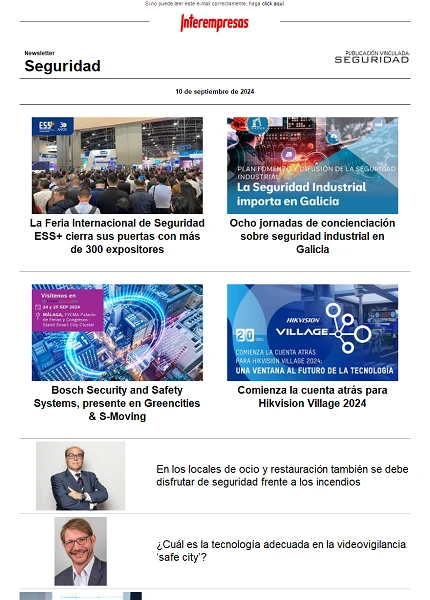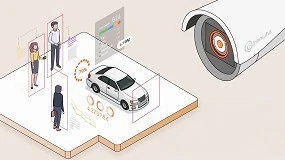Switches magnetic electromechanical switches vs
January 29, 2008
These include very high or very low speeds of drive; a large number of maneuvers; very aggressive environments, dust, etc.; humidity high; corrosive chemical agents; or important variations of the actuator to the switch, in distance. But to make a correct selection, is should be aware of the advantages, disadvantages and the mode of operation of magnetic switches.
Parts and components
Normally, the magnetic switches are composed of two parts: the magnet actuator, and the switch itself. The switch consists of a few tabs of magnetic material, special alloy of ferro-níquel, with contact zone protected by a coating of noble metal, usually of gold, with a separation between the two sides of 0.2 to 0.3 mm.
For its part, a glass envelope keeps the reeds in the correct position and also keeps inside a special atmosphere, mixture of nitrogen and hydrogen, for optimal protection in the area of contact. This system offers a very high reliability of contacts, a very high number of maneuvers, and absolute protection against unfavourable environments.
Open, closed and flip-flops: a range for every need
There are three basic types of magnetic switches: open; closed; and flip-flops, although sometimes it is also possible to get switched contacts.
A point of rupture is obtained through polarization magnets housed within the switch, because that they are regulated to its precise point during the manufacturing process. This is achieved a total interchangeability between switches of the same type. The actuators are usually permanent ceramic magnets, with or without mechanical protection, or they can also be electromagnets, in this case, they can act at a distance, electrically.
Open and closed switches operate through magnets n-S while bistable switches operate by N or S, depending on the desired function of opening or closing of the contact. The magnets are built in barium ferrite and do not lose their magnetic power, nor with the time or under influence of other external magnets. Variations in temperature, also influence the magnets and must be taken into account that a coefficient of 0.2 percent each centigrade decreases the magnetism to increase the temperature. However, - 30 to + 90 degrees Celsius, these variations are not permanent and recover the initial magnetism to re-establish the temperature.
Contacts normally opened (at rest)
As you approach the magnet actuator, the tabs on the switch are travelled by the lines of magnetic force of the actuator, and the attraction between them increases; to be increased, the force of attraction between two reeds growing exponential, and thus gets a very quick closure of the contact between 0.3 and 1.5 milliseconds; inversely on the descent of the magnetic threshold, it also produces a rapid opening of the contact in 0.3 - 0.6 milliseconds. In the interior of the magnetic switch, an antagonist magnet, prevents double rupture of the switch, even over very small distances.
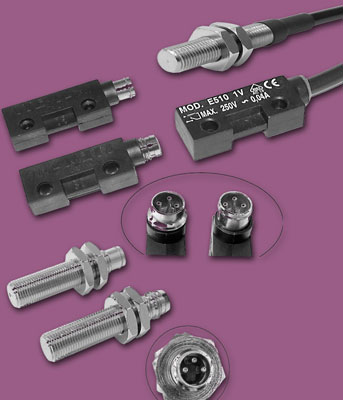
Contact normally closed (at rest)
In these switches, a more powerful antagonist internal magnet keeps United Contacts tabs, and the contact is closed at rest, approximation of an external actuator Imam, whose polarity is reversed to the internal magnet, cancels the action of this, and once exceeded the threshold of retention, the tabs are separated sharply.
All this of course follows actuators magnets must have correct polarization with respect to the switch, some brands of red and green, provide the correct situation of magnets and switches in the Assembly. The combinations of lines of force, allows in both cases, the open contact, both in the Cerrado, a drive in three directions, as well as a possible rotation of 90 ° actuator magnet.
Bistable contacts
With a proper sizing of the antagonistic internal magnet, it is possible to obtain switches that remain at a given position, according to the last magnetic information received, though it contact open, either contact closed. This magnetic maneuver does not need any external system maintenance neither electric nor magnetic, which simplifies the design of devices, being reactivated electrically do not require implementations to, remain in the position determined by the last magnetic information of the drive.
Bistable switches type 'r' must be actuated always in axial direction, that is, moving magnet actuator in parallel to the axis of the switch; Depending on the sense that comes the actuator and depending on the polarity of the magnetic actuator, will be the position of the switch, open or closed: for example, if a North magnet opens the switch to go from right to leftclose it to move from left to right, and a South magnet makes the reverse function. The combination of magnet north and manufacturing process. This is achieved a total interchangeability between switches of the same type. The actuators are usually permanent ceramic magnets, with or without mechanical protection, or they can also be electromagnets, in this case, they can act at a distance, electrically.
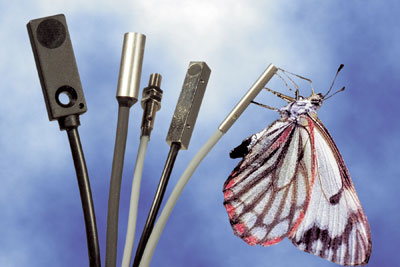
Its behavior under shock and vibration
All magnetic switches can be affected by shocks or vibrations. He has been to minimize this problem by means of elastic plates system Assembly, and also thanks to the internal magnetic polarization, however in bistable types, when the approach of the actuator magnet, is possible that significant vibration or shock produced the opening or early closure of the contact. Under normal circumstances, the magnetic switches Stem resist sinusoidal vibration up to 50 G. However, should seek to avoid possible vibration or shock in the direction perpendicular to the axis of the switch while that to the contrary, vibrations or shock whose oscillation is in the same direction of the axis of the switch they have little influence on him.
On the other hand, and like the electromechanical switches of action, there is a hysteresis or differential between the breaking point and the connection. This circumstance, can sometimes be beneficial, as it prevents the opening and closing of small displacements of the actuator magnet contact and also allows the contact between the clamp-prongs pressure keep to an important value to the point of investment. It is not possible to have the same point for opening and closing in a magnetic switch.
Duration of life
Should be the maximum care to avoid the deterioration of the magnetic switches in the phase of Assembly or test them to the machine or system, it is frequent that prior to the implementation processes underway make inadequate tests with very intense currentsfor example with filament lamps or contactors; in both cases the contact zone is damaged, and soon may have problems, due to overcurrent in the case of filament lamps, (the current cold is the order of 18 times the nominal), and surge for contactors or electromagnetswhose extracorriente of rupture easily reaches 12 times the voltage rating, due to the induction of the coil to produce the sudden degaussing of the kernel.
The use of a r-C circuit, e.g. 0'1 Mf on series with 150 ohms can effectively protect in the case of small relays, but the direct use of electromagnets or contactor should be avoided. If you use an r-C, it should be placed in parallel with the coil of the relay. It is advisable to carry out tests to an absence of electric spark between drivers that must connect to the magnetic switch. Also, long lines, DC especially, must be offset by a proper coil, in order to compensate for the capacity of the lines. In DC circuits, a diode of opposition, in parallel with the coil, properly deleted the extracorriente of openness, attention to the polarity, that improperly connecting the diode, it produces a short circuit. Magnetic switches, properly protected from overload, have a life span of much higher than the elements that govern, and in general, if she is used with weak currents, it is possible to say that his life is practically unlimited.
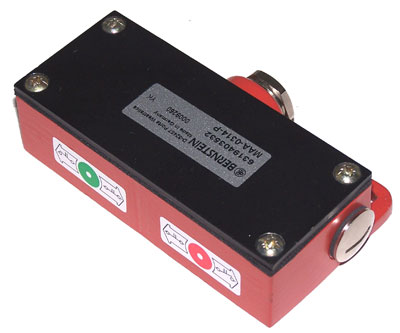
Application of magnetic switches
The replacement of the switches mechanics by magnetic is most desirable in the following cases:
-High-speed performance and high number of maneuvers, for example in counting systems.
-Very unfavourable environments, for example galvanic facilities.
-Absence of mechanical drives, and low force of action, in case of control of bodies at rest.
-Silent operation.
-Drive without mechanical, including by means of non-magnetic materials, pressure switches, systems of control level, etc.
There are many different types, allowing virtually unlimited use from conventional cases to the most specific.
As for Assembly, must avoid the presence of magnetic parts in the immediate vicinity of the switch, except for rates to do so. According to the type of switch and the distance you want to achieve, can choose the type of appropriate actuator as there are many different models of two types of electromagnet according to their use in flip-flops or normal switches and actuators magnets.
Both actuators magnets and switches, or its supports are provided for its fixation through elongated holes (colisos) either thread metrics.









